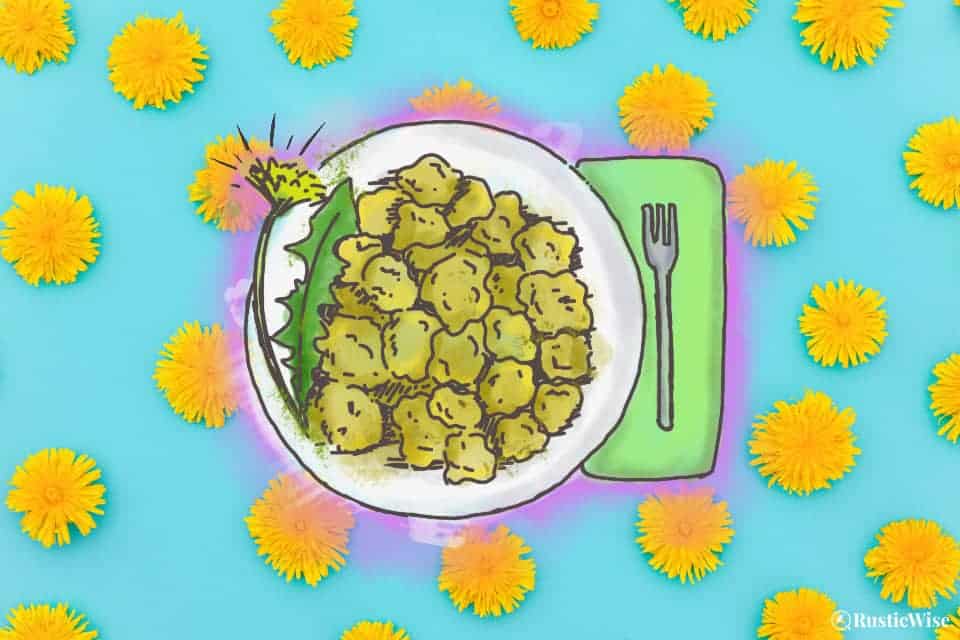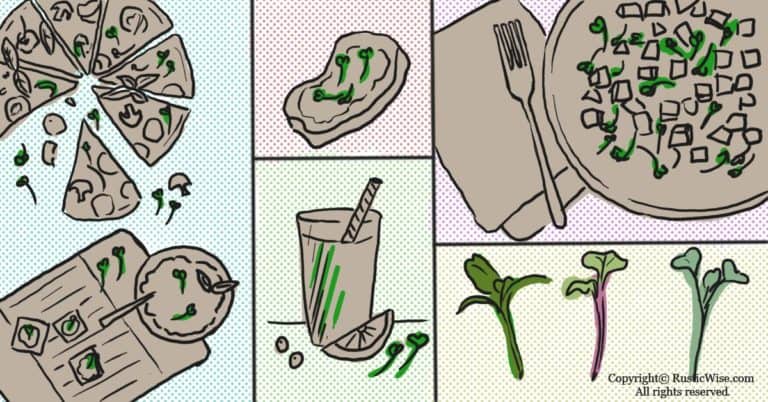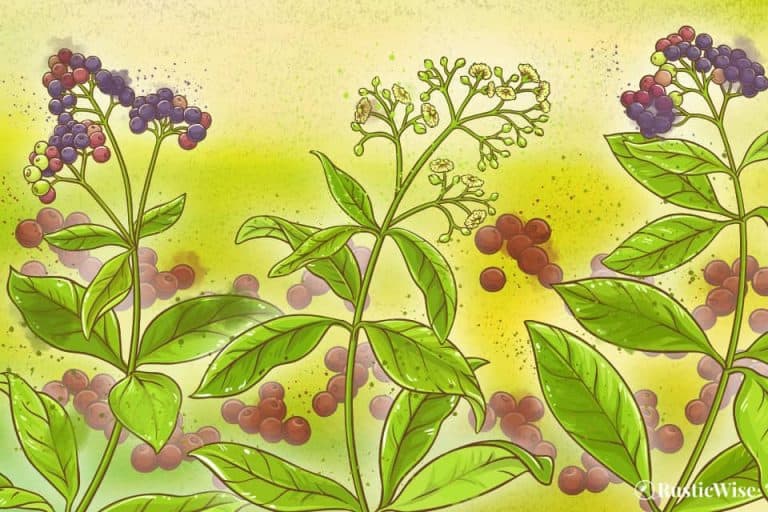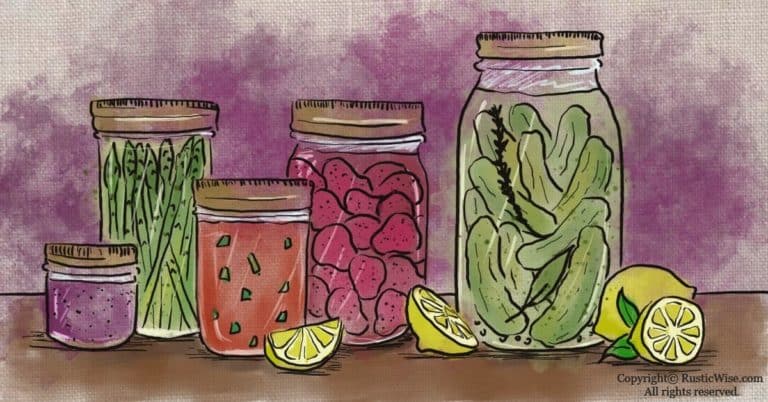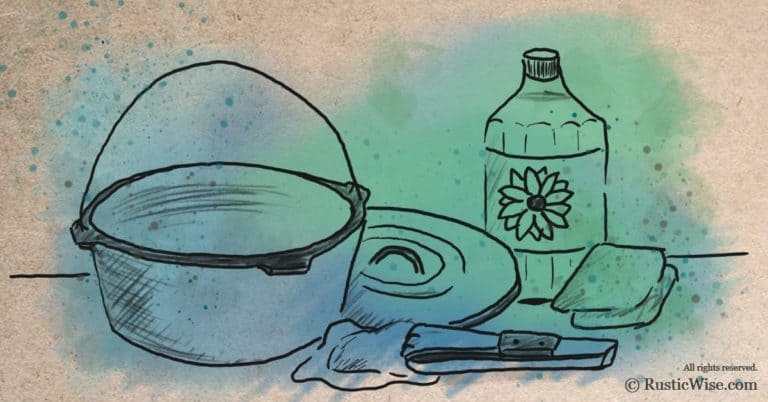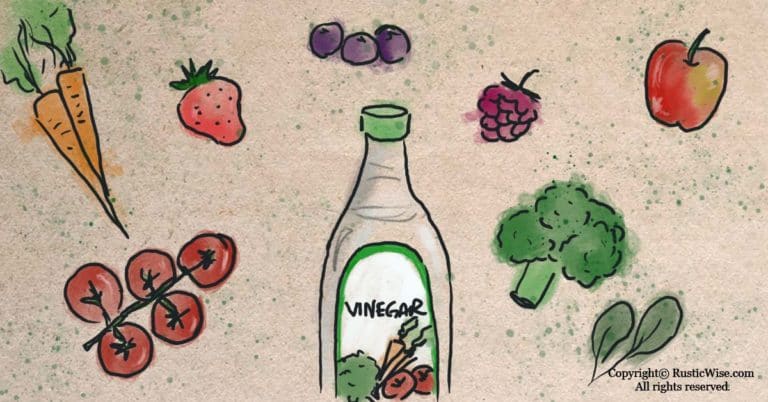Easy Dandelion Flower Recipe: How To Make Tasty Dandelion Fritters
If your yard is anything like mine, dandelions pop up wherever they please every spring without fail. It took me many years, but slowly I’ve stopped seeing these plants as invasive weeds and started seeing them for what they really are: edible wild food.
The entire plant is edible, but in this article, we’re going to focus on the golden blossoms. We have an easy and tasty dandelion flower recipe that will turn these wild flowers into tasty fritters.
If you’re looking for a tasty (and kid-approved) way to make good use of this free flowering herb, let’s go outside on a sunny day and pick some yellow blossoms! Gather up a few basic pantry supplies to make this dish—perfect for weekend brunches.
What do dandelion flowers taste like?
Add yellow dandelion flowers to your list of edible flowers. Dandelion flower petals have a mild flavor, with a hint of sweetness, like honey. If you’ve ever tried chrysanthemum tea, dandelion flowers remind me a lot of this!
The bract (the green part holding the flower together) has a slightly earthy taste—hardly noticeable at all.
The green sepals have a slightly bitter taste which is why you might wish to remove these before cooking (more on this below).
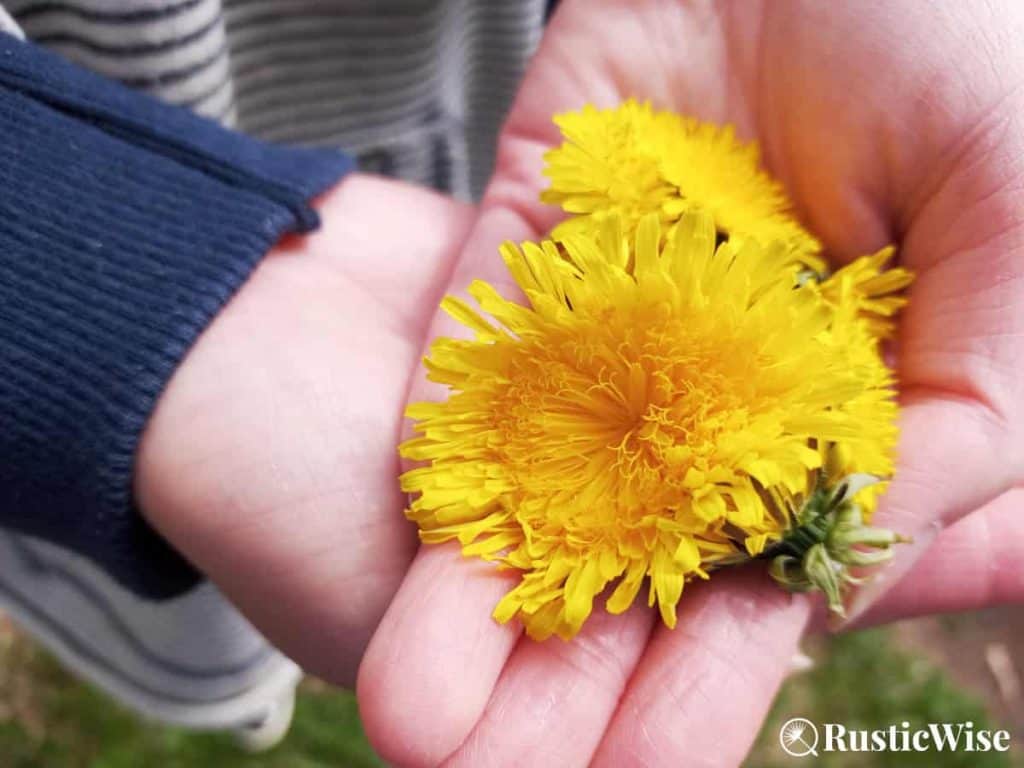
Credit: RusticWise
What parts of the dandelion plant are edible?
The whole dandelion plant is edible: flower, leaves, roots, and stems.
While dandelion stems are edible, many people forgo the stems, as it contains a milky fluid that doesn’t taste very good.
- Dandelion flower: This mild tasting and versatile flower can be cooked, eaten raw, or used to make tea. In a fritter recipe, dandelion flowers add a hint of sweetness, and a nice texture. More on ways to use these yellow flowers below!
- Dandelion greens: Dandelion leaves are one of the healthiest greens around. It’s jam-packed with vitamins A, C, E, and K. You can eat them fresh like a salad green, or blend them into smoothies. However, they have a slightly bitter taste. We like to sauté or boil them to make them taste better!
- Dandelion root: This flowering herb has deep, dark-brown taproots (which explains why they are so difficult to get rid of!). The roots are commonly made into dandelion root coffee (aka dandelion root tea) which is a caffeine-free coffee alternative. I love a cup of this brew in the evenings with a touch of honey and a splash of milk. If you are trying to cut back on caffeine, but still want something that tastes similar to coffee, this is the answer to your prayers.
Tips on harvesting dandelion blossoms
When foraging any wild plant, please make sure the area is pesticide and herbicide free. It’s also a good idea NOT to harvest any dandelions that grow close to roadsides and sidewalks to avoid pollutants.
Like tiny golden suns, the yellow petals open and greet the daylight. Early morning is the best time of day to harvest dandelion flowers. In the evening, or when the weather is disagreeable, the flowers tend to close.
Make sure to properly identify all plants are before harvesting. Look for the following characteristics:
- Jagged leaves (which is why this plant is called dent-de-lion in French, aka “lion’s tooth)
- Leaves are arranged in a basal rosette
- Hollow, milky stem
- Bright yellow flowers
Harvest from plants that are in full bloom.
While you can snip the yellow flowers off with scissors, I find it easiest to simply pluck off the dandelion flower head with my fingers.
Remember to bring a basket or container to collect your treasures!
Tip: If you have young ones at home, this is a fun and easy way to get them involved in foraging! They can see the entire process from harvesting to cooking in one morning.
How to prepare dandelion flowers for cooking
- Place dandelion flowers in a small colander and rinse under cold water to remove any insects and dirt. Alternatively, you can soak them in a bowl of salted water. But from experience, I find this method of soaking results in wilted and tired looking blossoms. It’s not a huge deal if you’re making dandelion fritters.
- Pat dry with a clean towel, or lay onto a towel-lined plate to dry. The flowers don’t need to be 100 percent dry, but you don’t want excess moisture in the fritters.
- Remove the dark green sepals. While these are edible, they have a slightly bitter taste which isn’t everyone’s cup of tea.
- Optional: You can choose to remove the petals from the bract, or leave the whole blossom intact. Either way works fine. When I made this dandelion flower recipe, I left my flowers intact, mostly out of pure laziness. But after feedback from my food critics (aka two kiddos), they wished I had removed the bract because it made the fritter more lumpy!

Credit: RusticWise
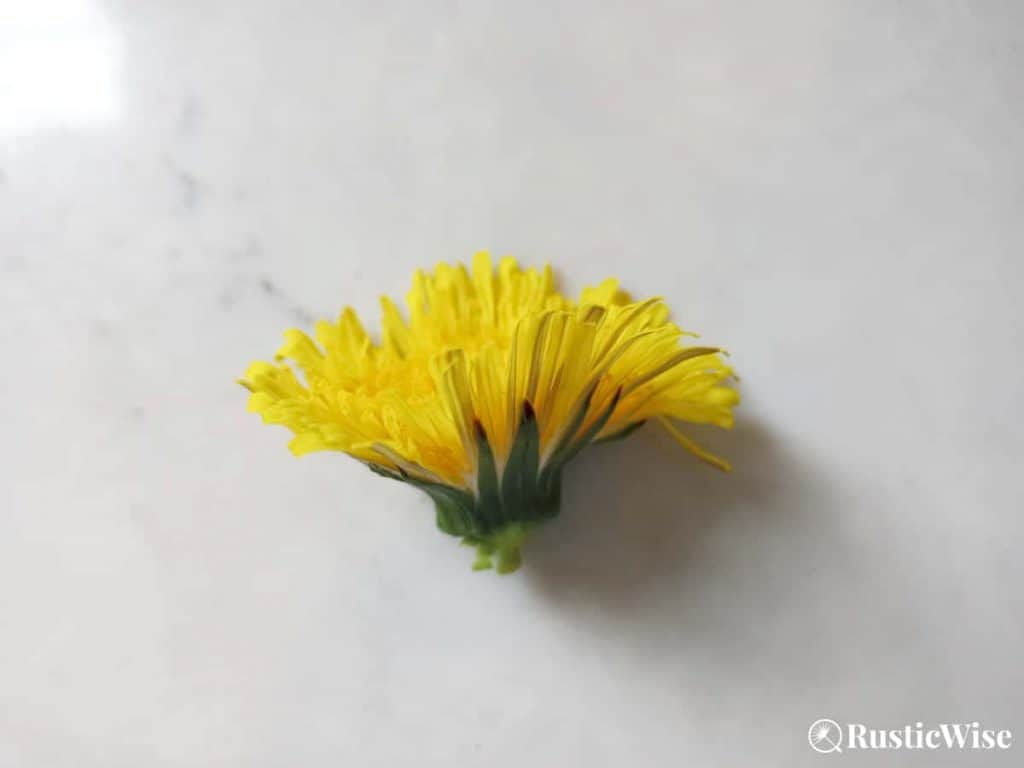
Credit: RusticWise
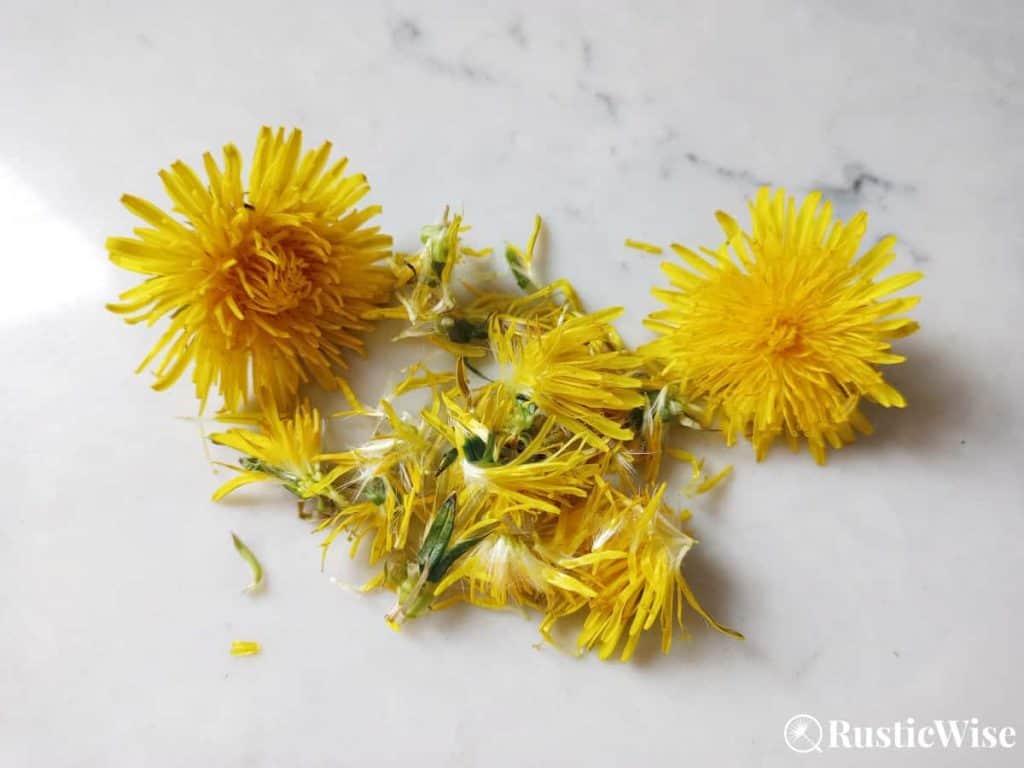
Credit: RusticWise
Dandelion safety
The dandelion plant is safe for most people. However, according to the School of Medicine at Mount Sinai, some may have an allergic reaction, or develop mouth sores from this flowering herb.¹
If you are allergic to the following plants, it’s best to avoid dandelion:
- Chamomile
- Chrysanthemums
- Daisies
- Iodine
- Marigold
- Ragweed
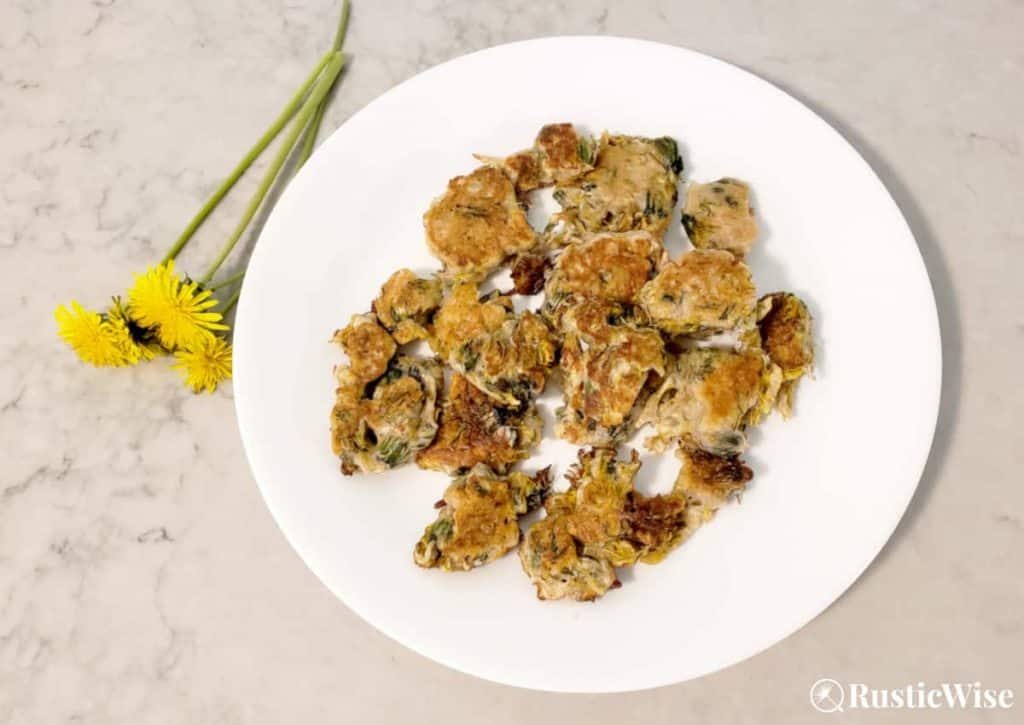
Credit: RusticWise
Tasty dandelion flower recipe: how to make dandelion flower fritters
While you can deep-fry fritters, I like to lightly pan-fry them instead.
This dandelion flower recipe is easily customizable: Use gluten-free flour, or whole wheat flour if you prefer. Swap out regular milk with a milk alternative. Use your favorite cooking oil.
This recipe is adapted from Carla Emery’s handy tome, The Encyclopedia of Country Living. I’ve reduced the amount of salt used.²
Note: Adjust the amount of salt used to your liking. The first time I made these fritters, I used 1 teaspoon of salt. I found this too salty so have adjusted the recipe for 1/2 teaspoon salt instead.
Yield: Makes around 18 small fritters which can serve roughly 4 people (depending on your appetite!)
You’ll need:
- 2 cups dandelion petals (see section above on harvesting and preparing flowers)
- 1 1/2 cup flour
- 2 teaspoon baking powder
- 1 tablespoon granulated sugar
- 1/2 teaspoon salt (add up to 1 teaspoon if you like your fritters on the salty side!)
- 1/2 cup milk
- 1 beaten egg
- 1 tablespoon melted butter or oil
- Your favorite cooking oil or butter to grease the pan
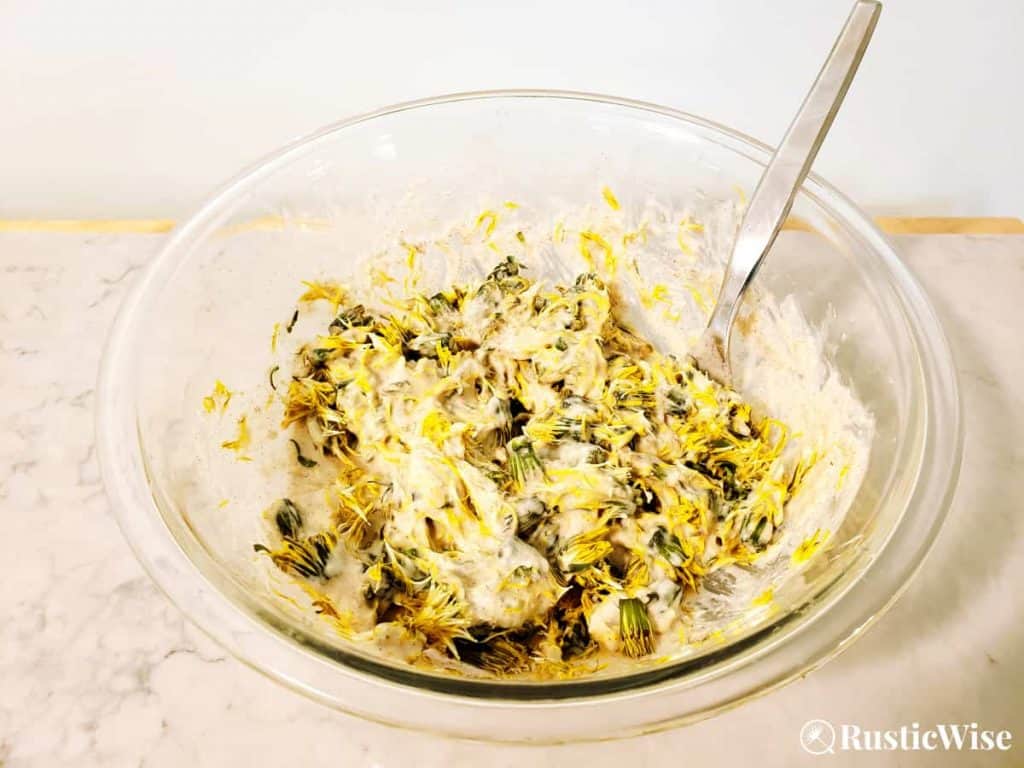
Credit: RusticWise
- Prepare dandelion flowers by rinsing in cold water and removing the green sepals (see section above).
- Combine dry ingredients in a large bowl (flour, baking powder, sugar, and salt).
- Add milk, beaten egg, and melted butter (or oil) to the dry ingredients. Stir until well combined.
- Stir in your dandelion blossoms into the mixture.
- Turn on your stovetop to medium-low and lightly grease the pan with a cooking oil of your choice. Drop fritter dough by heaping spoonfuls onto the hot pan. Lightly pan-fry by turning until golden brown.
Serve your delicious dandelion fritters warm! A few topping ideas to try are honey, maple syrup, jam or preserves, and apple sauce.
Health benefits of dandelion flowers
The dandelion plant (Taraxacum officinale) has many health benefits. While much of the focus is often on the leaves, the flowers are no slouch, either.
- Source of vitamins: Dandelion blossoms are an excellent source of vitamins A and B12.³
- Rich in antioxidants: The yellow flowers contain antioxidants (as do the leaves and roots). Antioxidants help your body fight against free radicals—molecules which contribute to rapid aging.⁴
- Anti-inflammatory properties: The flowers reduce bodily inflammation, which is a source of many health issues. Dandelion flowers also have soothing qualities, which is why you’ll often see them used in tinctures, creams, and homemade soap.⁴
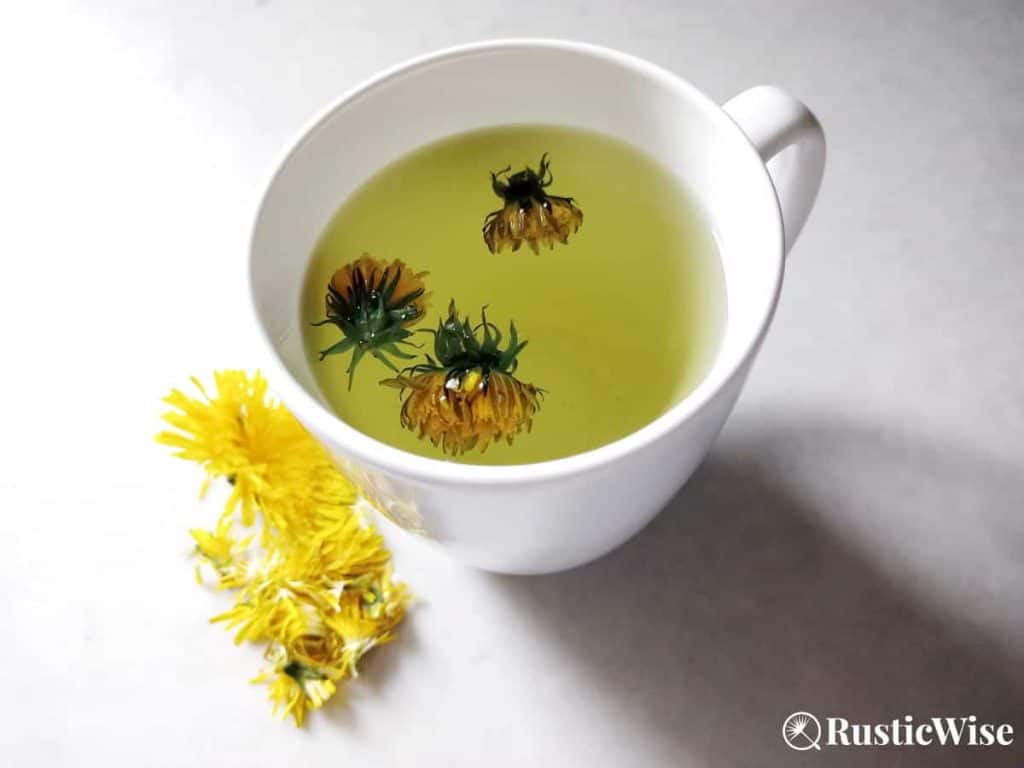
Credit: RusticWise
Other uses for dandelion flowers
If you have an abundance of fresh dandelions, here are a few ideas on what to do with them.
- Add a splash of color to salad: Yellow flower heads brighten up boring salads with their cheery color, and mild-sweetness.
- Make dandelion flower tea: This herbal tea tastes similar to chrysanthemum tea. Make a flower infusion by steeping several flower heads in hot water for 5 minutes. Add a dallop of honey to sweeten. (Don’t confuse this beverage with tea or coffee made with roasted dandelion roots.)
- Dandelion wine: Make good use of a healthy dandelion harvest by brewing your own wild wine—cheers!
- Dandelion syrup: A golden and sweet syrup, perfect for drizzling over pancakes, fritters, and other breakfast goodies.
- Dandelion jelly: Break out your canning supplies and turn your batch of dandelion into tasty jelly!
- Dandelion vinegar: Infuse vinegar with dandelion heads to make a healthy and tasty sweet and sour vinegar to drizzle onto salads and bread.
- Dandelion infused oil: Dandelion flowers have soothing and anti-inflammatory properties that are good for a wide range of personal care products. Add to soap, tinctures, make your own dandelion salve to soothe sore muscles, etc.
Related questions
Can you eat raw dandelion flowers?
Yes, flowers and leaves can be eaten fresh and raw. Give them a quick rinse first to remove any bugs and dirt and pat dry. Dandelion blossoms brighten up salads and add a mild sweetness. You could also use yellow flowers as a garnish.
Can you eat dandelion stems?
The whole dandelion plant can be used: flower, leaves, roots, and stems. The stems are hollow and contain a milky substance which can taste bitter. While the stems are not poisonous, many people don’t enjoy the flavor.
Would you like more timeless tips via email?
Fun tips to help you live an independent, self-sustaining lifestyle. Opt-out at any time.


References
- School of Medicine at Mount Sinai, Dandelion, https://www.mountsinai.org/health-library/herb/dandelion. Accessed May 2022.
- Emery, Carla (2012). The Encyclopedia of Country Living, 40th Anniversary Edition. Sasquatch Books. pp. 267. ISBN-13: 978-1-57061-840-6.
- Jarvie, Michelle (29 May 2015). “Dandelions for food,” Michigan State University. Accessed May 2022.
- Cleveland Clinic, Can You Eat Dandelions?, https://health.clevelandclinic.org/dandelion-health-benefits/. Accessed May 2022.

Author: Theresa Tesolin
Theresa is co-founder of RusticWise. She helps people unleash their inner DIY spirit by encouraging them to get dirty and make or grow something from scratch.

